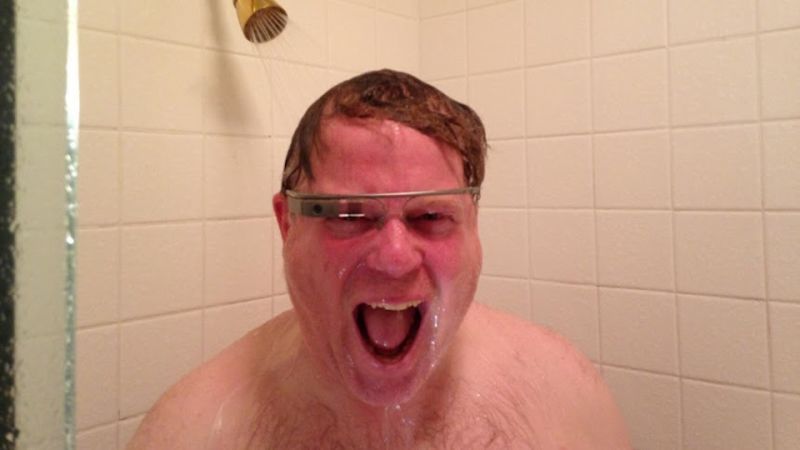Here’s the thing with VR: nobody has yet figured out what – or who – it’s actually for.
It seems like you can’t throw a rock without hitting some wild-eyed evangelist for VR. Apparently the next big thing is going to be VR tourism. On the one hand, this sort of thing could solve problems with overcrowding. Imagine if instead of the Mona Lisa, smaller than you expected, behind a barrier of smudged glass and smartphone-wielding fellow tourists, you could spend undisturbed time as close as you wanted to a high-pixel-count scan. And of course, being VR, you could take selfies from any angle without needing to wield a selfie stick or worry about permits for your camera drone.

On the other, you wouldn’t get to spend time in Paris and experience everything else that the city has to offer. At that point, why not just stay home in your favourite chair, enjoying a piped-in virtual experience, like the passengers of the cruise ship in Wall-E?

That’s the question that the VR industry has yet to answer successfully. Much like commercial-grade fusion power, it remains fifteen years away, same as fifteen years ago, and fifteen years before that. In fact, back at the tail end of last century, I played Duke Nukem 3D in a pub1 with goggles, a subwoofer in a backpack, and something called a 3D mouse. The whole thing was tethered to a pretty hefty gaming PC, which back then probably meant a 166 MHz CPU and maybe a first-gen 3dfx Voodoo graphics card.
It was fun, in the immature way that Duke Nukem was, but once the novelty of looking around the environments had worn off, I didn’t see anything that would make me pay the not-inconsiderable price for a similar setup for myself.
A couple of years ago I was at some tech event or other – maybe MWC? – and had the chance to try the then-new Oculus headset. I was stunned at how little the state of the art had moved forward – but that’s what happens when there is no clear use case, no pull from would-be users of the product, just push from people who desperately want to make it happen.
Now, the (virtual) chickens are coming home to roost. This piece in Fast Company admits the problems, but punts on offering any solutions.
The industry raised an estimated $900 million in venture capital in 2016, but by 2018 that figure had plummeted to $280 million. Oculus—the Facebook-owned company behind one of the most popular VR headsets on the market—planned to deliver 1 billion headsets to consumers, but as of last year had sold barely 300,000.
Investments in VR entertainment venues all over the world, VR cinematic experiences, and specialized VR studios such as Google Spotlight and CCP Games have either significantly downsized, closed down, or morphed into new ventures.
[…]
Ultimately it is down to VR developers to learn from existing success stories and start delivering those "killer apps." The possibilities are limited only by imagination.
Apple, more clear-headed than most, is postponing the launch of its own VR and AR efforts. This is particularly significant because Apple has a history of not being the first mover in a market, but of defining the use case such that every other player follows suit. They did not have the first smartphone, or even the first touchscreen, but it’s undeniable that these days almost every phone out there looks like an iPhone.
It’s not clear at this stage whether the delay in their AR/VR efforts is due to technology limitations or the lack of a clear use case, but either way, the fact that they could not see a way to a useful product does not bode well for anyone else trying to make a go of this market.
Shipping The Org Chart
The players who are staying in are the ones who want VR and AR to succeed for their own reasons, not because they see huge numbers of potential users clamouring for it. This is a dangerous road, as Sun found out to their cost, back in the day.
A long time ago— like 15 years ago— I worked at Sun Microsystems. The company was nearly dead at the time (it died a couple years later) because they didn't make anything that anyone wanted to buy anymore. So they had a lot of strange ideas about how they'd make their comeback.
— @mcc@mastodon.social (@mcclure111) November 18, 2019
Read the whole thread, it’s gold.
Here’s the problem for VR: while I don’t doubt that there is a small population of hardcore gamers who would love deeper immersion, there is no killer app for the rest of us. Even console gaming is struggling, because it turns out that most people don’t graduate from casual gaming on their smartphones to "serious gaming". This is the other thing that will kill Google Stadia.
The one play that Apple might have is the one that seems to be working with Apple Arcade: first get devices everywhere, then slowly add capabilities. If Apple came out with a physical controller, or endorsed a third-party one, Apple TV would be an interesting contender as a gaming platform. The same thing could work with AR/VR, if only they can figure out a use case.
If it’s just the Google Glass thing of notifications, but RIGHT IN YOUR EYEBALLS, I don’t think it will go anywhere. The only convincing end-user demo I’ve seen is walking or cycling navigation via a virtual heads-up display, but again, that’s a niche use case that won’t support an entire industry.

This one image set back the AR industry by decades.
I already don’t have time for video, because it requires me to be somewhere where I can pay attention to video, listen to audio, and not be interrupted for maybe quarter of an hour. Adding the requirement for substantial graphics support and power consumption, not to mention the headset itself, and extending the timeline to match, further reduces the applicability of this technology.
But go ahead, prove me wrong.
🖼️ Top photo by Juan Di Nella on Unsplash
-
This was back in the good old days before drinking-age laws were introduced, which meant that all of us got our drinking done when all we were in charge of was bicycles, limiting potential damage. By the time we got driving licenses, drinking was somewhat old-hat, so there was much less drive to mix the two. ↩